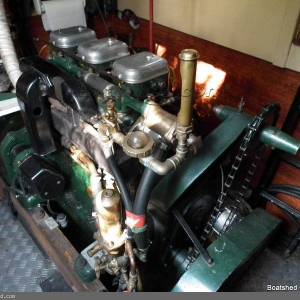
How to winterise your boat
If you won’t be using your boat all year round then September is the time to begin thinking about winterising your narrowboat or canal boat before the cold weather sets in. Water in the pipes can freeze during the winter. If the pipes expand too much they could burst, causing a leak in to the boat’s accommodation.
Water tank
Make sure that your domestic water tank is empty before switching off the electric water pump. Turn off the isolation valve between the pump and the water tank and turn on all the taps.
Briefly turn the pump back on, to expel any remaining water from the system. Use this for a maximum of 30 seconds to avoid damaging the pump motor. Leave the taps turned on and the pump turned off throughout the winter. In the bathroom leave the showerhead hanging loose to allow any water to drain from the hose.
You may want to check the antifreeze levels in the engine coolant system (and the central heating system if you have one). Testers are available in shops that sell motor spares.
If you are leaving the boat unattended you may also want to turn off the electrics at the battery isolation switch and turn off the propane or butane gas supply.
Bilge
This is also a good time of year to clean out your engine bilge – the loveliest of jobs! To prevent foul odours, growth of bacteria and corrosion of the hull grab some bilge cleaner from your local chandlery and use as per the instructions.
Water in the bilge and engine compartment may come from the stern gland, the weed hatch, rain from the deck or plumbing leaks.
Condensation and window leaks can also be the cause of water in the bilges. Check that any drainage systems, (for example the scuppers and the channels around any roof hatches) are clear from mud, leaves and debris. If you find an unusual amount of water in the engine compartment make sure that you don't have a plumbing leak or some kind of leak from the engine.
Responsible
If your bilge pump isn’t already on a float switch pump out any excess water. If the bilge water contains oil or grease this should be pumped into a container and disposed of responsibly rather than allowing it to float on the surface of the canal. Boatyards or local councils may advise the nearest place to safely dispose of oil. Any residual water will need to be sponged out; and this can be time consuming.
Ship shape
If you’re cleaning, emptying, tidying and winterising the boat ready to prepare her for sale do consider our no sale, no fee brokerage service. Read more about how to sell your boat.
Disclaimer: These tips are for guidance only. If you are unsure about any element of DIY boat maintenance please seek advice from a reputable marine engineer.
You may also like:
Living on a Boat: The Boatshed Guide (free) / Help! I want to sell my boat! / Don’t miss: The Boatshed Grand Union Daily/ A slideshow of our boat of the moment./More articles.
New here? Follow our blog on Facebook or Twitter and share your waterways pictures and news.
Never miss an article: Sign up and get the latest blog articles sent directly to you.

